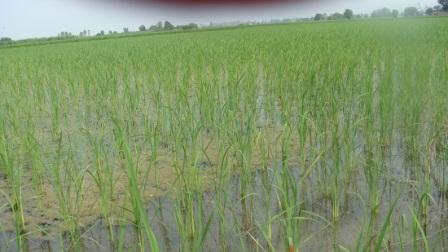News and Articles
Water security for India: The external dynamics - An IDSA Task Force Report
Posted on 01 Dec, 2010 08:44 PMThe report by Institute for Defence Studies and Analyses is premised on the fact that India is facing a serious water resource problem and is expected to become 'water stressed' by 2025 and 'water scarce' by 2050. It raises fundamental questions about the forces driving water demand and the political dynamics of riparian relations, both in terms of hindrances and opportunities, amongst states in the subcontinent. Rivers, a crucial source of water resources, physically link upstream and downstream users and at the same time create barriers.
Ecological Sanitation locations in India
Posted on 01 Dec, 2010 04:55 PMEcological Sanitation is a new approaching sanitation where there is minimal water use and where human waste can be used as fertilizer. It is a truly sustainable approach.
NASA study finds earth's lakes are warming
Posted on 01 Dec, 2010 11:14 AM Lake Tahoe, seen here from Emerald Bay, was one of the primary validation sites for the global lake study. Image credit: NASA/JPL-Caltech
Lake Tahoe, seen here from Emerald Bay, was one of the primary validation sites for the global lake study. Image credit: NASA/JPL-Caltech
Africa water altas by the United Nations Environment Programme
Posted on 01 Dec, 2010 10:45 AMArticle and Image Courtesy: United Nations Environment Programme (UNEP)

This Atlas is a visual account of Africa's endowment and use of water resources, revealed through 224 maps and 104 satellite images as well as some 500 graphics and hundreds of compelling photos. However the Atlas is more than a collection of static maps and images accompanied by informative facts and figures: its visual elements vividly illustrate a succinct narrative describing and analyzing Africa's water issues and exemplifying them through the judicious use of case studies. It gathers information about water in Africa and its role in the economy and development, health, food security, transboundary cooperation, capacity building and environmental change into one comprehensive and accessible volume.
Peer Water Exchange (PWX) receives 2010 Intel Environment Award
Posted on 29 Nov, 2010 04:40 PM
The Peer Water Exchange (PWX) was awarded the 2010 Intel Environment Award today. PWX, a project of Blue Planet Network, is a combination of process, technology platform, and people designed to unlock the global capacity and creativity of individuals, philanthropies, businesses and implementers to solve the global safe drinking water and sanitation crises.

Sustainable Sanitation and Water Management (SSWM) toolbox launched
Posted on 26 Nov, 2010 03:57 PMsswm.info – On November 1st, the Sustainable Sanitation and Water Management toolbox went online.
Palak Dil Lake - Mizoram
Posted on 26 Nov, 2010 03:00 PMThe Mizoram state has three types of (natural) lakes: valley lakes, tectonic/landslide lakes and artificial reservoirs, but the only lake of significance is Palak Dil, which is a natural lake in a depression in the hills. Palak Dil may possibly be a combination of valley and tectonic lakes. Locally in Mizoram, lakes are called dils. There are many such dils scattered all over the state, but they are tiny pools or marshy depressions such as Rengdil, Tamdil and Mampui Dil (Choudhury 2002). The Palak Lake is situated within the Mara Autonomous district Council, which is a region inhabited by the Mara Tribe. The Maras are distinct from the majority Mizos and in the Mara language the Palak Lake is referred to as Pala Tipa.
Fluorosis water contamination in rural India - A video by Earth Report
Posted on 26 Nov, 2010 12:08 PMVideo Courtesy: EarthReport
Source: 5min Media
It has been proved that it's a direct result of drinking ground water that's contaminated with high levels of fluoride. This video suggests that rainwater is the best source of water for communities living in these regions.
Direct seeding of rice A simple solution to India s water crisis?
Posted on 26 Nov, 2010 11:57 AMIn partnership with the Columbia Water Center, researchers from Punjab Agricultural University have initiated a multi-year project to implement and field-test diverse water-saving technologies, practices and policies aimed at reducing agricultural water use in the state of Punjab, particularly among rice farmers. In last year’s trial, the most successful project involved the installation of inexpensive tensiometers in the fields of over 500 farmers, yielding water savings of 30-35 percent.
Concurrently with the tensiometer trials, the team also recruited a smaller number of farmers to adopt a different way of cultivating rice altogether: Direct seeding of rice.
In traditional rice cultivation, rice is sprouted in a nursery; sprouted seedlings are then transplanted into standing water. With direct seeding, rice seed is sown and sprouted directly into the field, eliminating the laborious process of planting seedlings by hand and greatly reducing the crop’s water requirements.
 Conventional rice production requires standing water
Conventional rice production requires standing water
Seasonal changes in Indian aerosols: Updates from Earth Observatory
Posted on 25 Nov, 2010 12:49 PMIn recent years, scientists have detected very high levels of aerosol pollution in the air over India. Some of it is the result of industrial and agricultural activity, and some of it is nature at work.